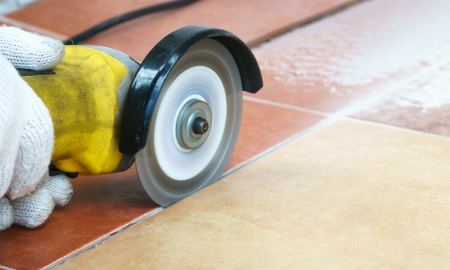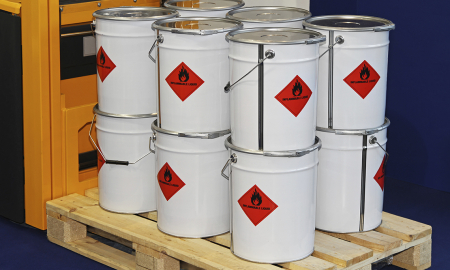Reducing Occupational Noise Exposure for the Rail Gearbox Technician
Employers must ensure that controls are implemented in the workplace to reduce their employees’ risk of excessive noise exposure, in line with the Control of Noise at Work Regulations 2005. We explore some of the noise impacts witnessed at a rail depot as well as the solutions and controls implemented to overcome any non-compliance.
All industry sectors are required to comply with the Control of Noise at Work Regulations 2005, and employers must ensure that policies and controls are implemented in the workplace to reduce their employees’ risk of excessive noise exposure.
Dan Williams, one of SOCOTEC’s occupational hygiene consultants, gives an overview of the noise impacts witnessed at a rail depot as well as the solutions and controls implemented to overcome any non-compliance.
The Problem
Technicians were working in a section of a shed at a train manufacturer, and their work tasks involved refurbishing gearboxes. Noise levels in this area were considered to be typical, with the exception of three noise-generating items:
- A noisy compressor bank (feeding pneumatic tool lines)
- A pair of gearbox testing rigs
- Powered tool usage (specifically nut guns)
Before tackling any health and safety issues, a Health and Safety Officer should consider the Hierarchy of Control as shown above. This is the most fundamental way of analysing any health and safety concern on site. With some consideration and clever thinking, improvements can be made to tasks and processes which can have significant impacts. Within the Hierarchy of Controls, the most beneficial solution is to eliminate the cause of the problem, with PPE as the ‘last line of defence’.
Problem One
Compressors
The compressor system in the shed was a bank of older piston style compressors used to feed the pneumatic air lines, used to ‘power’ pneumatic tools in the refurbishment of gearboxes. There are several types of compressors available on the market and while the older style piston based compressor systems have been in use for years and are robust, they can be incredibly noisy when running. Technicians working near to these older piston based compressors were frequently exposed to noise levels in excess of 85dB(A).
Solution – Elimination & Substitution
Firstly, a purpose-built compressor house was constructed to house the compressors outside the shed; moving the noise source away from the employees effectively eliminates this source of noise at the engineers working location.
Soon after this process was performed, the piston compressors were substituted for a newer, rotary screw compressor bank. This substitution resulted in noise levels in the new compressor shed being significantly reduced to 81dB(A), effectively a >50% reduction in noise (a 3dB reduction is half the noise energy).
Problem Two
Gearbox Rig
Gearbox testing rigs were used to check the refurbished gearboxes were working effectively and safely. The audible ‘whine’ produced when in operation created two noise problems; exceeding 85dB(A) for extended periods of time (each test could last up to an hour and a half), and causing an annoyance or distraction. Gearbox whine is usually caused when gears meshing inside an enclosure amplify any sounds within. This situation was exacerbated when multiple test rigs, positioned next to one another, were engaged simultaneously.
Solution - Engineering
A steel, Perspex and rubber enclosure was engineered to completely enclose the gearbox test rig. The resultant noise levels at the operator’s position dropped from over 85dB(A) to 75dB(A) which was a significant reduction in this particular instance. In noise terms, a reduction of 10 dB(A) represents an 85% reduction!
Problem Three
Powered hand tools
Powered hand tools are the trusty sidekick of any rail depot technician. Portable and powerful, they can often outperform manual methods.
When using appropriate extensions, they can generate the torque required to get the job done with significantly less manual effort. Powered hand tools can encompass a wide range of items such as impact wrenches (nut guns), angle grinders, die grinders, reciprocating saws and chainsaws etc. Noises generated by half inch nut guns showed that noise levels can regularly reach between 95dB(A) - 105dB(A) when used during gearbox refurbishment.
Solution – Administrative Control + Hearing Protection
In this instance, the most practicable option here was to adopt a ‘buy quiet’ tool policy going forwards and enforce hearing protection while the power tools were in use. This was also supplemented with provision of information, instruction and training for noise awareness to promote a safer work culture. Other levels of the Hierarchy of Control were unsuitable for the following reasons:
- Elimination – It is an essential ‘manual’ task
- Substitution – Use of non-power tools are very labour intensive with potential to introduce manual handling and additional health and safety issues eg. musculoskeletal issues, RSI (although further hand arm vibration issues should be considered)
- Engineering methods – Limited access and available space for automation
- Administrative – Task rotation also explored, but individuals typically follow through on specific tasks
Overall Outcome
Using the Hierarchy of Control, the site management were able to reduce their engineers’ personal noise exposures and also decrease the general (ambient) noise levels within the shed by means of elimination of noise sources, engineering controls, and administrative controls.
The reduced risk to employees for Noise Induced Hearing Loss (NIHL) came as a result of elimination and substitution methods (problem one), engineering methods (problem two) and consistent use of PPE (problem three).
Training and awareness improved the noise culture within the workplace; operatives directly involved with noisy power tool tasks now notify colleagues working nearby to don hearing protection before power tools are used. Through effective risk assessment and application of these controls, this employer also fulfilled their obligation under the Control of Noise at Work Regulations 2005. Reduced impact of noise on technicians during shift has also led to a happier and healthier workforce.
How can SOCOTEC help?
Our highly qualified specialists can provide a market-leading service, offering accurate assessment of worker exposures, key observation of processes and any current control measures. Additionally, our provision of guidance with regards further controls can provide continual improvements in worker health and well-being. SOCOTEC can assist employers with compliance with legislation and regulations, including Control of Noise at Work Regulations, COSHH Regulations, and Control of Vibration at Work Regulations amongst others.
To find out more about our services, click here or get in touch via the contact form.
Further reading
https://www.hse.gov.uk/noise/index.htm
https://www.hse.gov.uk/noise/regulations.htm





Add new comment